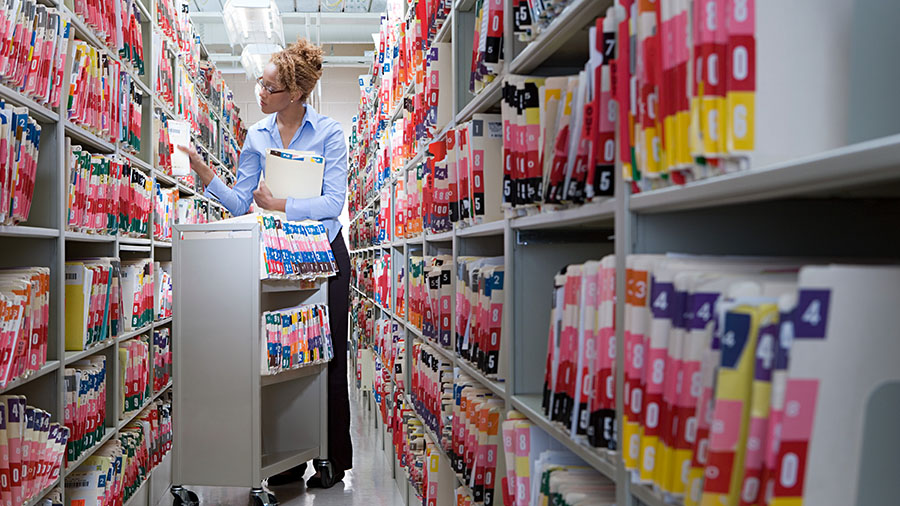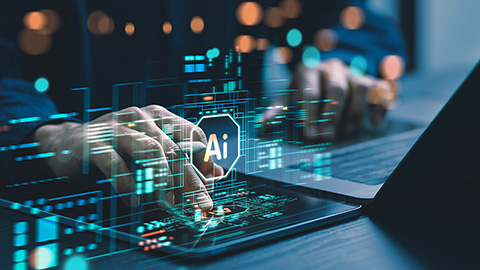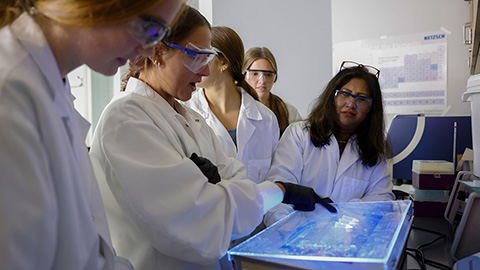Teaching AI to listen
When I entered the world of clinical genomics, I expected long days parsing through journal articles, tidying spreadsheets of patient data and running Python scripts late into the night. I was prepared to code, not to listen.
That changed when I began working with clinical notes — messy, personal and inconsistent footprints left by physicians. Buried in them were powerful clues: a family history of breast cancer, a BRCA1 mutation, a hesitant mention of a diagnosis. These fragments shaped diagnosis, care and discovery.
The problem? These clues are easy to miss. Manually reviewing thousands of records is slow, subjective and error-prone. That’s where artificial intelligence, or AI, specifically natural language processing, or NLP, began to change my work.

As a bioinformatics graduate student at Michigan Medicine, I build hybrid NLP systems that bridge structure and storytelling — algorithms trained to “read” closely, knowing that “positive” doesn’t mean hopeful and that “no history” could be a red flag.
Our models combine classic machine learning methods, like conditional random fields, with domain-specific rules and genetic lexicons. The rules, based on medical knowledge, prevent errors like flagging "no family history of breast cancer" as a risk. The lexicons act as specialized dictionaries of gene names, mutations and terms that help the system extract key variants, inheritance patterns and clinical details from messy notes.
The result: faster, more consistent identification of patients who may benefit from genetic testing or clinical trial enrollment. For example, if a note states, "Mother diagnosed with breast cancer at 42; patient reports positive BRCA1 mutation," our system flags this as a high-risk case and alerts clinicians to recommend genetic counselling or appropriate clinical trials. This cuts delays, reduces subjectivity and helps ensure fewer patients slip through the cracks.
What surprised me most wasn’t the power of these tools, but how they’ve challenged my assumptions. What does “accuracy” mean in medicine? What errors are acceptable? In clinical NLP, a mislabel isn’t minor — it means someone gets missed. If the system misreads “no history of colon cancer” as “history of colon cancer,” a patient might face unnecessary testing, or worse, real risks could be overlooked. In genetic medicine, such errors can delay diagnosis and treatment with serious consequences.
There’s still a long road ahead. I'm exploring how to move beyond extraction toward interpretation. Can we build models that not only find genetic risks but summarize them meaningfully? Could AI reveal disparities in access to genetic counseling or care?
AI hasn’t replaced my work — it’s reshaped it. It’s made me more careful, collaborative and curious. In a field where the data is deeply human, the greatest thing AI has taught me is how to listen.
Enjoy reading ASBMB Today?
Become a member to receive the print edition four times a year and the digital edition monthly.
Learn moreGet the latest from ASBMB Today
Enter your email address, and we’ll send you a weekly email with recent articles, interviews and more.
Latest in Opinions
Opinions highlights or most popular articles

How pediatric cataracts shaped my scientific journey
Undergraduate student Grace Jones shares how she transformed her childhood cataract diagnosis into a scientific purpose. She explores how biochemistry can bring a clearer vision to others, and how personal history can shape discovery.

Debugging my code and teaching with ChatGPT
AI tools like ChatGPT have changed the way an assistant professor teaches and does research. But, he asserts that real growth still comes from struggle, and educators must help students use AI wisely — as scaffolds, not shortcuts.

AI in the lab: The power of smarter questions
An assistant professor discusses AI's evolution from a buzzword to a trusted research partner. It helps streamline reviews, troubleshoot code, save time and spark ideas, but its success relies on combining AI with expertise and critical thinking.

How AlphaFold transformed my classroom into a research lab
A high school science teacher reflects on how AI-integrated technologies help her students ponder realistic research questions with hands-on learning.

Writing with AI turns chaos into clarity
Associate professor shares how generative AI, used as a creative whiteboard, helps scientists refine ideas, structure complexity and sharpen clarity — transforming the messy process of discovery into compelling science writing.

What’s in a diagnosis?
When Jessica Foglio’s son Ben was first diagnosed with cerebral palsy, the label didn’t feel right. Whole exome sequencing revealed a rare disorder called Salla disease. Now Jessica is building community and driving research for answers.

